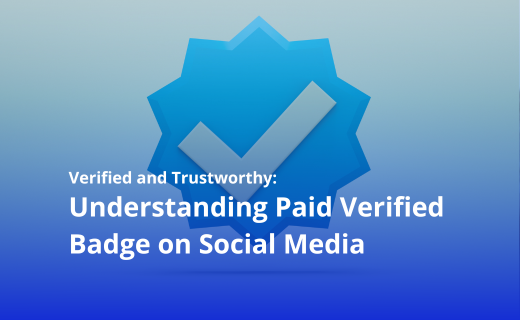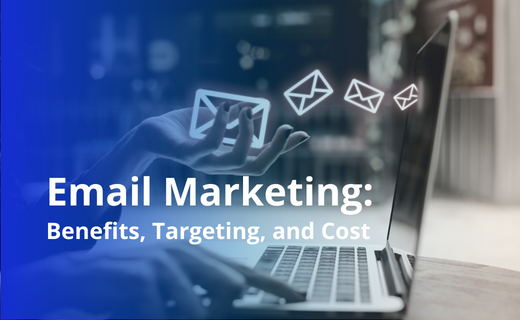
Why Isn't My Ad Showing Up on Google: What You Need to Know About Google's Impression Share
Ever wondered why Google showed your competitors' ads instead of yours when you typed your target keywords? You've likely missed out on winning an ad auction due to the large number of advertisers on the platform. To increase the chances of serving your ad, you should focus on both the budget and quality of your ads. The likelihood of your ad being seen, known as impression share in Search Engine Marketing (SEM), is influenced by both factors. Here are some tips to help improve your impression share:
1. Increase your budget
Most advertisers are given limited budgets by the clients/ companies, restricting them from potentially winning the ad auction on their ideal keywords. Those who spend more on the keywords will have a better opportunity to appear on the Search Engine Result Page(SERP) or have a higher impression share.
By spending more on keywords, you boost the chances of your ad winning the auctions. This might not be a great long-term strategy unless you have a bottomless pit of money. However, it certainly can deliver some short-term results.
2. Narrow Your Location
You may consider targeting your ads in specific locations if you have a limited budget. For instance, instead of advertising throughout the entire country, you could choose to focus on major cities. By analyzing your campaign history, you can also identify areas where you've seen the most success and target those areas specifically. This will reduce the number of competitors you're up against and allow you to improve your impression share even with a smaller budget.

3. Use Relevant Negative Keywords
While raising your budget, you should also monitor the negative keywords. The more searches you get, the more negative keywords you have to remove. Ideally, it would be best to do this daily before spending too much on irrelevant keywords. Boosting the budget without filtering the negative keywords means you are wasting your pennies. On the other hand, effective use of negative keywords will lead you to better ROI. To filter negative keywords, do the following steps:
- Check the search terms. Find keywords irrelevant to your campaign: For example, you are selling and targeting keywords plain t-shirts on broad match, and you find the following words: plain shorts and striped t-shirt. You can include shorts and stripes on your negative keywords to avoid those words appearing again in your search terms.
- Filter your keywords based on cost, and find costly keywords with clicks but no conversions: As Google charges you per click, keywords with many clicks but no conversions mean that the audience considers it irrelevant to your products. Therefore, it is better to include them in negative keywords.
- Filter based on cost per conversion: Some keywords cost over 50% of your overall spending while it only converts 1 or 2 for months. Consider putting them in negative keywords and focusing on keywords with higher conversions and less spending.
4. Revamp Your Bidding Strategy
To ensure the most effective use of your budget, it is important to have a clear understanding of your bidding strategy for Google Ads. Consider what your campaign goals are, such as increasing impressions, clicks, or conversions. By targeting specific keywords and adjusting your bids accordingly, you can maximize the results of your campaign. Having a clear understanding of your current position and desired outcome will aid in creating an effective strategy.
- To increase visibility of your business and raise awareness, consider using a target impression share bidding strategy. This increases the likelihood of your ad appearing on the search engine results page. Google offers three options for your ad position: anywhere on the result page, top of the result page, or absolute top of the result page. Keep in mind that this approach prioritizes brand awareness over conversions.
- To drive ad clicks and target specific keywords, consider using Manual CPC as a bidding strategy. This method allows you to adjust the bid for individual keywords, which can be particularly useful if you have identified keywords that perform well for your business, or if you want to compete for specific keywords. By increasing the bid on those keywords, your ads will be more likely to be shown to users who are more likely to click on them.
- If you want your audience to take action, choose Maximise Conversions: Google will show your ads to those who likely want to convert.

5. Improve Ad Quality Scores
The quality score, which is an important factor in determining impression share in search engine marketing, is made up of three components: expected click-through rate (CTR), landing page experience, and ad relevance. To improve your impression share, it's important to regularly check your quality score and identify which areas need improvement. For example, if your score is low for expected CTR, you may need to make changes to your ad copy. If your score is low for landing page experience, you may need to evaluate the speed, design and user experience of your landing page. Lastly, ad relevance is closely related to keywords, the content of your ads, and the content of your landing pages. Ensuring that these elements align with user intent can help increase your impression share.

Breaking through the intense competition on Google can be difficult. Experimentation through A/B testing on keywords, ad copy, and bidding strategy may be necessary to determine which approach aligns best with user intent and campaign goals.
To gain a better understanding of how to improve your impression share, consider scheduling a free consultation with KPI Media, a digital marketing agency in Singapore.































![Top 5 Performance Marketing Agencies in Singapore [2024]](https://assets-global.website-files.com/6337c10f1badd94e65c880fd/656ae2e6f6e786000e3a5c3b_performanceblog.png)
![The Complete Guide to LinkedIn Ads Targeting For B2B Startups [2023]](https://assets-global.website-files.com/6337c10f1badd94e65c880fd/64fecea66abe46916dbea16d_blog%20covers%20(7).png)
.png)
.png)
.png)
.png)
.png)
.png)










.png)

.png)


.png)



